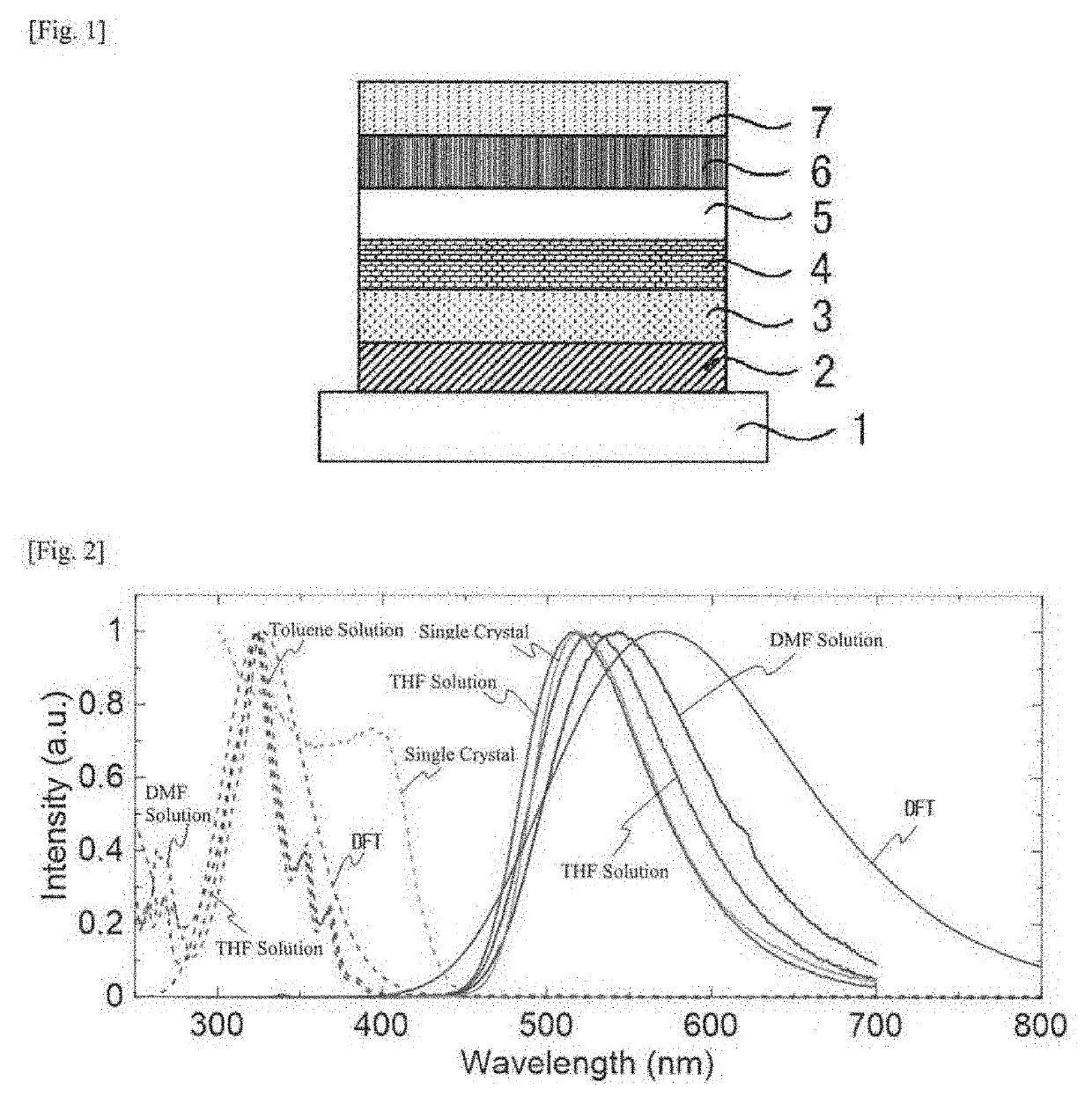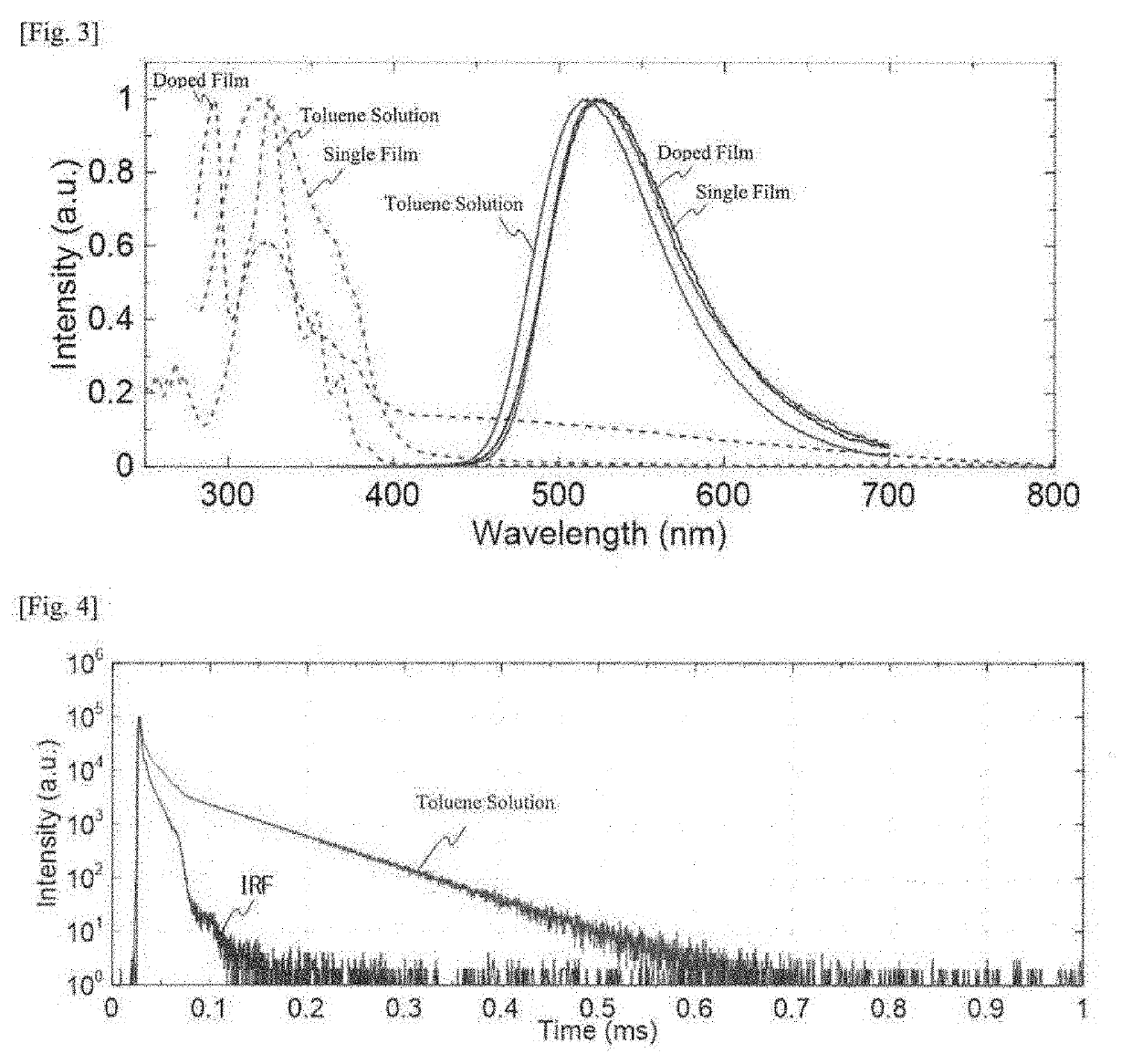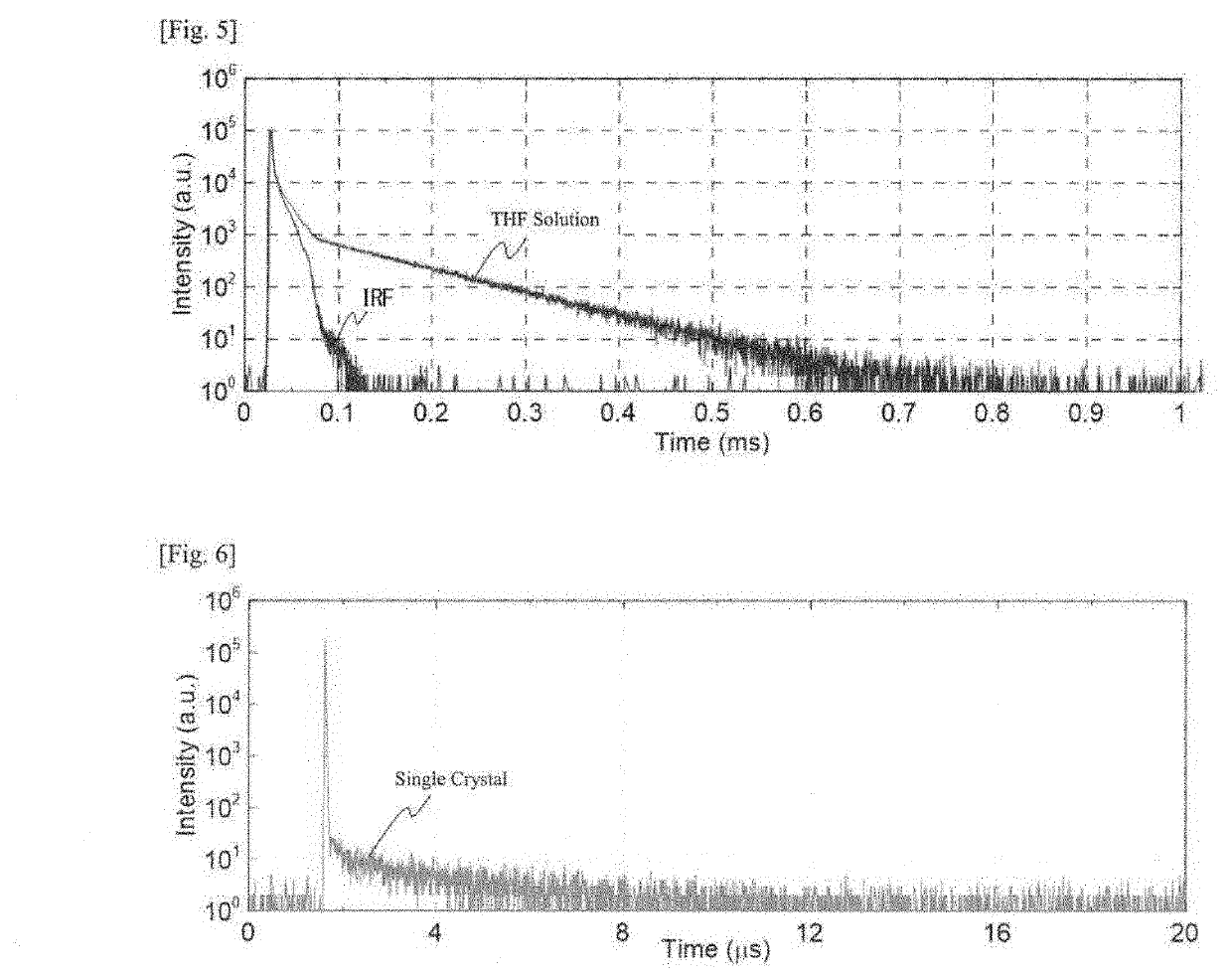Organic light-emitting element, and light-emitting material and fluorescent body used in same
a light-emitting element and light-emitting material technology, applied in the field of organic light-emitting devices, can solve the problems of low luminescent quantum efficiency of compounds, limited light emission efficiency improvement by fluorescence alone from the directly occurring excited singlet state, and cannot be expected to be applicable to the practical use of light-emitting device materials. , to achieve the effect of high light emission efficiency, delayed fluorescence, and high quantum yield
- Summary
- Abstract
- Description
- Claims
- Application Information
AI Technical Summary
Benefits of technology
Problems solved by technology
Method used
Image
Examples
example 1
[0119]The compound 1 was dissolved in dimethylformamide, tetrahydrofuran or toluene to prepare solutions thereof (concentration 10−5 mol / L).
[0120]According to a sublimation method, a single crystal of the compound 1 was formed to be an organic photoluminescent device. In X-ray structural analysis, all the atoms of the resultant crystal were in one and the same plane, RMS (root-mean-square) of the other atoms than 1H was 0.036 angstroms, and the compound had high planarity.
[0121]According to a vacuum evaporation method, a thin film of the compound 1 (hereinafter referred to as “single film”) was formed on a quartz substrate under the condition of a vacuum degree of 10−3 Pa or less, in a thickness of 50 to 100 nm to be an organic photoluminescent device.
[0122]Apart from this and according to a vacuum evaporation method, the compound 1 and DPEPO were vapor-deposited from different evaporation sources on a quartz substrate under the condition of a vacuum degree of 10−3 Pa or less to for...
example 2
[0138]On a glass substrate with an anode of indium tin oxide (ITO) having a thickness of 100 nm formed thereon, thin films were layered according to a vacuum vapor deposition method under a vacuum degree of 10−4 Pa. First, on ITO, TAPC was formed in a thickness of 30 nm. Subsequently, TCTA was formed thereon in a thickness of 20 nm, and further on this, CzSi was formed in a thickness of 10 nm. Next, the compound 1 and PPT were co-deposited from different evaporation sources to form a layer having a thickness of 30 nm as a light-emitting layer. At this time, the concentration of the compound 1 was 10% by weight. Next, PPT was formed in a thickness of 40 nm. Further, lithium fluoride (LiF) was vapor-deposited in a thickness of 0.8 nm, and then aluminum (Al) was vapor-deposited thereon in a thickness of 100 nm to form a cathode, thereby producing an organic electroluminescent device.
[0139]FIG. 16 shows light emission spectra of the produced organic electroluminescent device measured at...
example 3
[0140]An organic electroluminescent device was produced in the same manner as in Example 2, except that NPD was formed in a thickness of 30 nm on ITO in place of forming TAPC in a thickness of 30 nm thereon.
[0141]FIG. 19 shows light emission spectra of the produced organic electroluminescent device measured at a voltage of 6 V, 9 V and 12 V; FIG. 20 shows a current density-voltage characteristic thereof; and FIG. 21 shows an external quantum efficiency (EQE)-current density characteristic thereof. The organic electroluminescent device using the compound 1 as a light-emitting material attained a high external quantum efficiency of 9.4%.
PUM
| Property | Measurement | Unit |
|---|---|---|
| triplet energy level | aaaaa | aaaaa |
| energy level | aaaaa | aaaaa |
| temperature | aaaaa | aaaaa |
Abstract
Description
Claims
Application Information
 Login to View More
Login to View More - R&D
- Intellectual Property
- Life Sciences
- Materials
- Tech Scout
- Unparalleled Data Quality
- Higher Quality Content
- 60% Fewer Hallucinations
Browse by: Latest US Patents, China's latest patents, Technical Efficacy Thesaurus, Application Domain, Technology Topic, Popular Technical Reports.
© 2025 PatSnap. All rights reserved.Legal|Privacy policy|Modern Slavery Act Transparency Statement|Sitemap|About US| Contact US: help@patsnap.com



